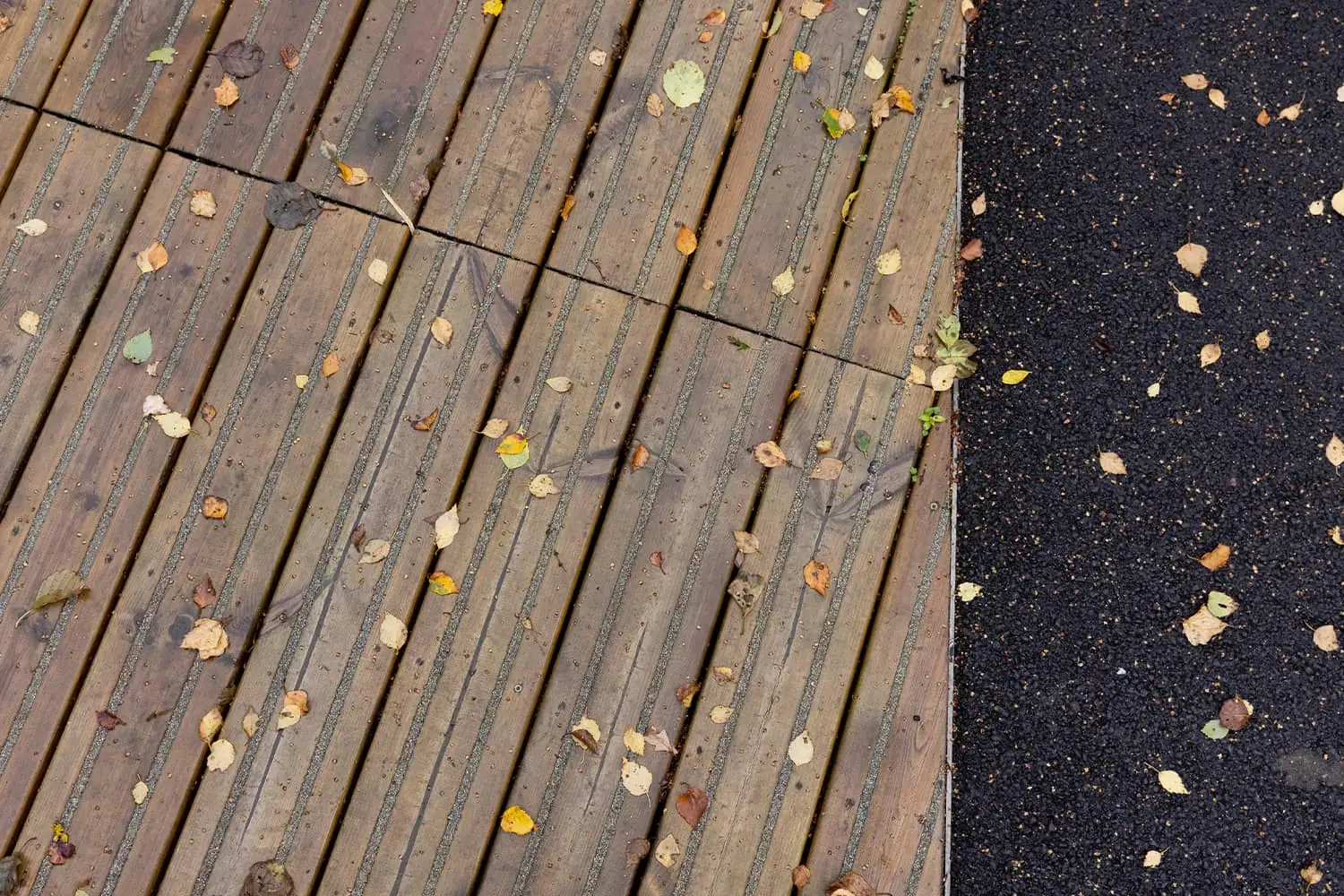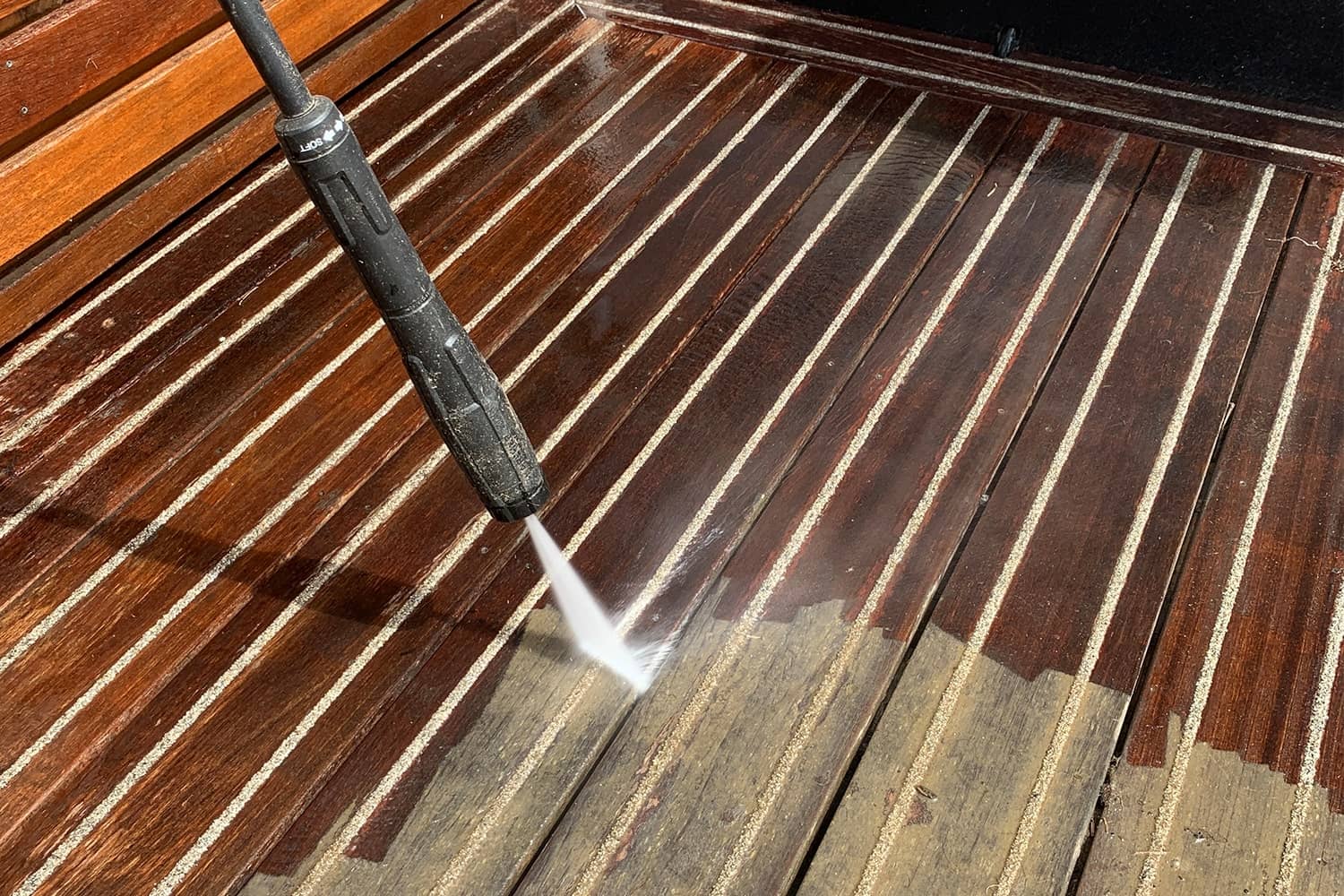Safety is paramount at home and at work for preventing injuries and removing liability. Without the proper measures in place for your decking, people are more likely to slip – which could lead to problems down to line.
To prevent this, we’ve included information on decking slip ratings and how you can introduce long-term solutions to increase the grip of your decking, stopping accidents before they happen.
What are Decking Slip Ratings?
To ensure that a decking board will be safe in all weather conditions and pass the test of time, a test known as the Stanley Pendulum Test is performed on it. This test results in the decking slip rating in the form of a Pendulum Test Value (PTV) – a widely used measure for many types of surfaces.
The tests are comprehensive, analysing the grip of the decking board in multiple conditions and over all directions, resulting in a comprehensive and accurate value. Here is a table on what the PTV ranges indicate:
| PTV Range |
Potential for Slip |
| 0-24 |
High |
| 25-34 |
Moderate |
| 35-64 |
Low |
| 65+ |
Very Low |
To achieve a “low” slip risk rating, decking must achieve a minimum score of 35 – this minimises the chances of personal injury. However, decking boards wear down over time, and weather conditions like ice and rain can lower the rating. A score this low on timber deck boards without non-slip inserts presents a slipping hazard in wet conditions.
We rigorously test our products to determine their slip rating. With non-slip inserts, our decking boards can achieve a minimum initial PTV of 85 – over their 15-year warranty, this will keep them well within or above the “low” slip risk rating.
Find out more about slip testing from Gripsure >
Long-Term Non-Slip Grip
While you can perform short term care for your decking, including cleaning, drying, and maintenance, these solutions aren’t failproof. Lapses in routine, extreme weather conditions, accidents, and mistakes can all lead to large increases in the slip risk factor for your decking.
The only way to assure long-term grip is with non-slip inserts from Gripsure. These are added to boards as a resin-bound, non-slip aggregate sitting atop the board. Our inserts provide secure footing even in wet conditions, offering the best safety performance.
They’re also cost effective – both due to their low labour requirements for instalment when compared to other methods, and their 15-year guarantee for a PTV of at least 55 with an expected lifespan as a safe solution for far longer.
Explore our range of non-slip decking, including sustainable MOSO® Bamboo products >

